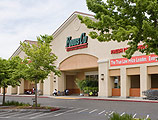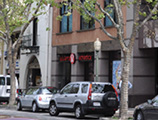The humanitarian tragedy in Turkey and Syria—50,000 plus deaths and more than a million homeless—was triggered by a 7.8-magnitude earthquake (M7.8). Could it happen here?
The earthquake could. San Francisco’s 1906 earthquake was estimated at M7.9 and California’s Cassandras have been predicting another Big One ever since. Are they right? Certainly if viewed through the telescope of geologic time. A Google search suggests that M8 quakes occur in the same location every 500 years or so. Smaller quakes occur far more often, but with a fraction of the destruction. An M7 quake is 1/30th as powerful as an M8, but can strike several times a century. 1989’s Loma Prieta earthquake was an M7, causing extensive damage, yet taking only 63 lives.
But earthquakes are one thing, ensuing disasters another. According to the international experts, Turkish buildings collapsed because of a unique combination of factors: inadequate building codes, the failure to enforce even those codes, crooked developers, and lax governmental oversight. Also, the Turks’ basic building designs and construction materials played a role in the devastation. In Turkey, it is common to use heavy, stacked hollow-clay tile (HCT) blocks to create interior partitions and exterior walls. Found throughout the sweltering world where air conditioning is chancy, HCT walls can enhance cooling, but lack the strength of poured concrete and steel.
And it appears that many of Turkey’s buildings were either built of non-ductile concrete or atop soft stories or, worse, both. “Non-ductile concrete” basically means that the concrete doesn’t have enough steel rebar, while a “soft story” building is one in which the ground floor is largely open—picture a small apartment house atop a garage—thus lacking lateral support. California has these buildings but their numbers are dwindling. In the wake of Loma Prieta, earthquake-prone municipalities like San Francisco required the retrofit of all soft story buildings. About 90 percent of the city’s softies have been retrofitted to date, with about 900 awaiting seismic upgrading.
Non-ductile concrete was banned by the 1979 Uniform Building Code, and whenever older buildings are substantially renovated, their concrete must be retrofitted if found to be non- ductile. By the way, it is worth pointing out that not all non-ductile concrete buildings are dangerous or prone to collapse nor are all ductile buildings earthquake-proof—the issue isn’t black and white.
The big picture was summed up by a top structural engineer: “It seems clear that the quality of the construction materials in Turkey are not comparable to those used in the US, even going back to the 1960s.”
Truth be told, I know nothing about geology nor anything about engineering or construction. Predicting quakes is best left to those who know that tectonic plates can’t be washed and design to those whose math didn’t end with algebra.
Here’s what I do know. Our building codes are quite robust, sometimes annoyingly so. Among the world’s most rigorous, our regulations are revised seemingly every other year, updated with expensive fixes for marginal gains in building safety: e.g., the requirement to put fire sprinklers in closets in new residences.
And in forty years of building in northern California, I have yet to meet a structural engineer willing to skirt the codes. Engineers are the Boy Scouts of the real estate world, well-intentioned eager guys who solve problems and seldom let their egos get in the way (sorry, architects). Again, like scouts, they live by the code. In fact, while rare, our structural issues are usually the other way around—over-designing—with engineers insisting upon, say, a 10X10 column when a 6X6 will do.
Also, while we surely have our share of crooked developers, I’ve yet to even hear of a building inspector willing to bless substandard construction or deviations from approved plans in exchange for a bribe.
Everyone in real estate complains about how overregulated we are …until one of those regulations saves a life. When, say, a construction site eyebolt drops onto that hard hat you’re required to wear, you should be thanking OSHA, not your lucky stars. If all we need to avoid another Turkey are solid building codes, capable professionals and honest public officials, our buildings—at least those built to modern codes or seismically upgraded—have little to fear from earthquakes.






















